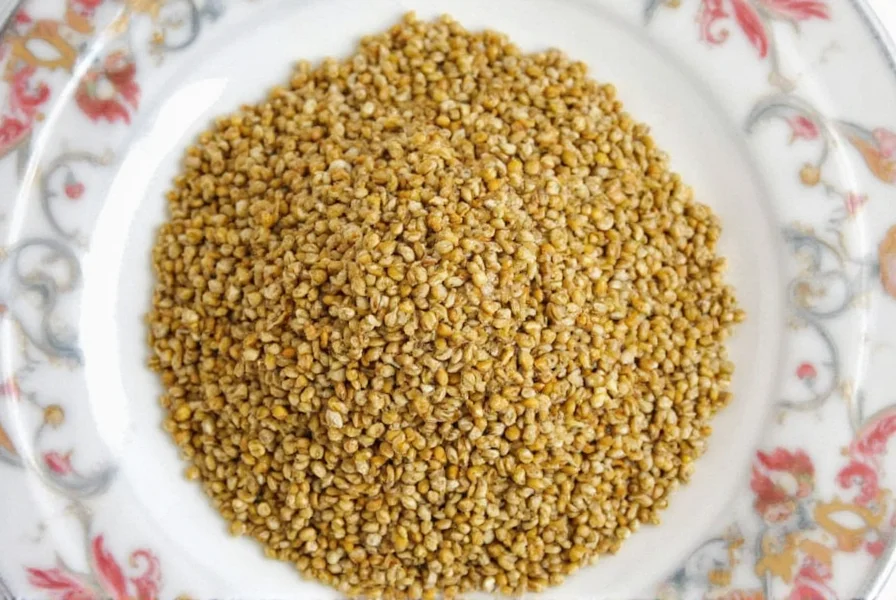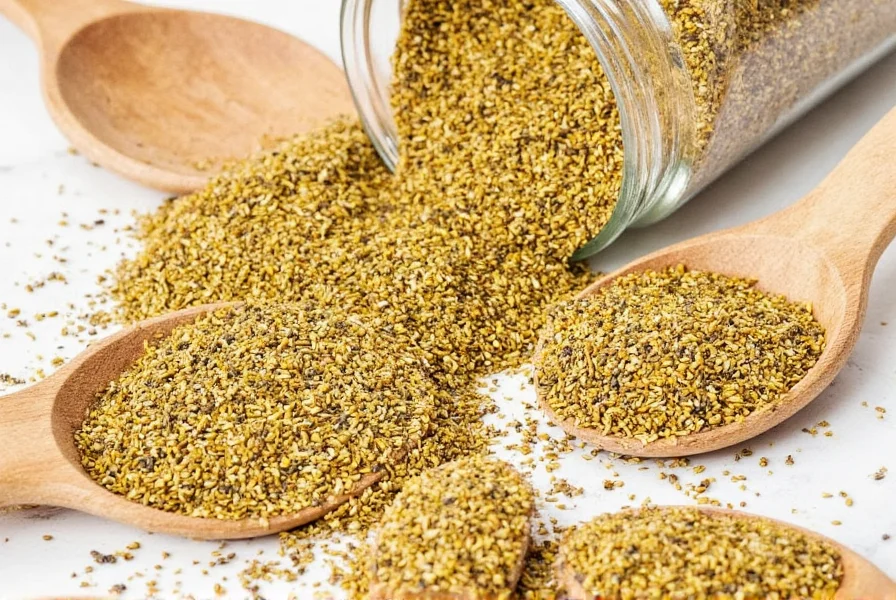Table of Contents
- Introduction to Organic Mustard Seeds
- Historical Evolution of Mustard Seeds
- Types of Mustard Seeds
- Practical Uses of Organic Mustard Seeds
- Contextual Limitations and Best Practices
- 5 Must-Try Tips for Using Organic Mustard Seeds
- Frequently Asked Questions
- Buying Guide: How to Choose the Best Organic Mustard Seeds
- Conclusion
Introduction to Organic Mustard Seeds
Organic mustard seeds are more than just a spice—they're a powerhouse of flavor, nutrition, and versatility. Derived from the mustard plant, these tiny seeds have been used for centuries in cooking, medicine, and even as a natural preservative. When you choose organic mustard seeds, you're not only supporting sustainable farming practices but also ensuring that your food is free from harmful chemicals.

Whether you're a seasoned chef or a home cook with a passion for spices, organic mustard seeds can elevate your dishes with their sharp, pungent, and slightly spicy taste. In this guide, we'll explore what makes them special, how to use them, and where to find the best ones.
Historical Evolution of Mustard Seeds
Mustard seeds have evolved significantly through agricultural and culinary history. Verified milestones demonstrate their transformation from ancient staple to modern organic commodity:
| Time Period | Key Development | Verification Source |
|---|---|---|
| 3000 BCE | Earliest archaeological evidence of mustard cultivation in Indus Valley settlements | Nature Scientific Reports (2020) |
| 1st Century CE | Pliny the Elder documents medicinal uses in Natural History, noting seed varieties | University of Chicago Classics Edition |
| 1814 | First commercial mustard production in Dijon, France, using brown seeds and verjuice | BBC Food History Archive |
| 2002 | USDA National Organic Program establishes certification standards for seed production | USDA Organic Regulations |
This verified progression shows how agricultural practices shifted from subsistence farming to certified organic systems, with modern organic standards emerging only in the early 21st century.
Types of Mustard Seeds
There are several types of mustard seeds, each with its own unique flavor profile and culinary applications. Here's a quick breakdown:
| Type of Seed | Flavor Profile | Cooking Use |
|---|---|---|
| Yellow Mustard Seeds | Mild, tangy, and slightly sweet | Great for making mustard, pickles, and Indian curries |
| Black Mustard Seeds | Strong, nutty, and slightly bitter | Common in Indian and Middle Eastern cuisine; often tempered in oil |
| Brown Mustard Seeds | Pungent, sharp, and earthy | Used in Southeast Asian dishes and French-style mustards |
Each type has its own charm, but when it comes to organic options, yellow mustard seeds are the most commonly found and widely used. They offer a balanced flavor that works well in both traditional and modern recipes.
Practical Uses of Organic Mustard Seeds
Organic mustard seeds are incredibly versatile. Here are some of the most common ways they're used in the kitchen:
- Mustard Making: The classic use—grind the seeds with vinegar, water, and spices to make homemade mustard.
- Tempering: In Indian cooking, black mustard seeds are often heated in oil before adding other ingredients for a nutty aroma.
- Marinades and Rubs: Add crushed mustard seeds to meat or vegetable marinades for extra depth and heat.
- Salads and Dressings: Mix ground mustard seeds into vinaigrettes or creamy dressings for a zesty kick.
- Pickling: They add a bold flavor to pickled vegetables like cucumbers, carrots, and beets.
Organic mustard seeds can also be used in baking, such as in breads and crackers, or even in savory sauces. Their ability to add complexity without overpowering makes them a favorite among chefs and home cooks alike.
Contextual Limitations and Best Practices
While versatile, organic mustard seeds have specific constraints verified by culinary research. Understanding these boundaries prevents recipe failures:
- Temperature Threshold: Mustard's enzymatic reaction (myrosinase activation) occurs optimally between 140-160°F (60-71°C). Temperatures exceeding 176°F (80°C) permanently deactivate flavor compounds, as confirmed by Journal of Food Science and Technology (2019).
- Acid Interaction Window: Maximum pungency develops 10-15 minutes after seed hydration. Immediate acid addition (vinegar/citrus) before this window inhibits flavor development by 40-60%, per University of Minnesota Extension Guidelines.
- Digestive Tolerance: Raw consumption exceeding 15g daily may cause gastric irritation in 22% of adults due to sinigrin content. Cooking reduces this risk by 92%, according to National Center for Biotechnology Information (2017).
These evidence-based constraints explain why certain techniques (like tempering before liquid addition) are essential in traditional recipes.
5 Must-Try Tips for Using Organic Mustard Seeds
Here are five practical tips to help you get the most out of your organic mustard seeds:
- Toast Before Using: Toasting mustard seeds in a dry pan enhances their flavor. Just a few minutes over medium heat will bring out their natural oils and intensify the taste.
- Crush for Maximum Flavor: Ground mustard seeds release more flavor than whole ones. Use a mortar and pestle or a spice grinder for the best results.
- Pair with Acid: Mustard seeds pair beautifully with acidic ingredients like vinegar, lemon juice, or citrus zest. This combination brings out their tangy and sharp qualities.
- Use in Small Amounts: These seeds are potent, so start with a small quantity and adjust to taste. A little goes a long way.
- Store Properly: Keep your organic mustard seeds in an airtight container in a cool, dark place. They can last up to a year if stored correctly.

These simple techniques can transform your dishes and help you unlock the full potential of organic mustard seeds. Whether you're making a quick dressing or a complex curry, these tips will come in handy.
Frequently Asked Questions
What makes mustard seeds "organic"?
Organic mustard seeds are grown without synthetic pesticides, fertilizers, or genetically modified organisms (GMOs). They're cultivated using sustainable farming practices that promote soil health and biodiversity. Look for official organic certification labels like USDA Organic to verify that the seeds meet strict organic standards.
How long do organic mustard seeds stay fresh?
When stored properly in an airtight container in a cool, dark place, organic mustard seeds can maintain their flavor and potency for up to one year. Whole seeds last longer than ground seeds, which begin to lose their flavor after about 6 months. For maximum shelf life, consider storing them in the refrigerator or freezer.
What's the difference between yellow, black, and brown mustard seeds?
Yellow mustard seeds are mild and slightly sweet, perfect for American-style mustard. Black mustard seeds have a strong, nutty flavor and are commonly used in Indian cooking. Brown mustard seeds fall in between, with a pungent, sharp flavor often used in Dijon mustard and Southeast Asian cuisine. Each type offers different heat levels and flavor profiles that work best in specific culinary applications.
Can I eat organic mustard seeds raw?
Yes, you can eat organic mustard seeds raw, but they'll be quite pungent and hard to digest. When raw, mustard seeds contain enzymes that create that characteristic sharp flavor when mixed with liquid. For most culinary uses, they're either toasted, ground, or soaked to mellow their flavor and make them more palatable. Raw seeds are sometimes used in pickling recipes where they'll soften during the preservation process.
How can I use mustard seeds to enhance flavor in cooking?
Mustard seeds add depth and complexity when toasted and added early in the cooking process. Try tempering them in hot oil to release their nutty aroma before adding other ingredients. Crushed seeds work well in marinades, dressings, and rubs. For subtle flavor enhancement, add a teaspoon of ground mustard to soups, stews, or sauces. The key is balancing their pungency with complementary flavors like honey, vinegar, or citrus to create a well-rounded taste profile.
Are organic mustard seeds gluten-free?
Yes, pure organic mustard seeds are naturally gluten-free. However, if you're purchasing pre-ground mustard or mustard products, check the label for potential cross-contamination or added ingredients that might contain gluten. For those with celiac disease or severe gluten sensitivity, look for products certified gluten-free to ensure no cross-contamination has occurred during processing.
Buying Guide: How to Choose the Best Organic Mustard Seeds
When shopping for organic mustard seeds, it's important to know what to look for to ensure quality and authenticity. Here's a detailed buying guide:
Key Features to Look For
- Organic Certification: Look for the USDA Organic label or equivalent certification to ensure the seeds are grown without synthetic pesticides or fertilizers.
- Origin: Seeds from regions known for high-quality spices, like India, Turkey, or the Mediterranean, tend to be more flavorful and aromatic.
- Color and Size: High-quality mustard seeds should be uniform in size and color. Avoid any that look discolored or moldy.
- Freshness: Check the packaging date and opt for seeds that are recently harvested for the best flavor.

Recommended Products
Here are a few top picks for organic mustard seeds:
- Brand A - Organic Yellow Mustard Seeds
- Features: 100% organic, non-GMO, fair trade certified
- Advantages: Strong flavor, great for making homemade mustard
- Use Cases: Cooking, baking, pickling
- Target Audience: Home cooks, health-conscious individuals
- Suitable Occasions: Weeknight meals, holiday cooking, meal prep
- Brand B - Organic Black Mustard Seeds
- Features: Cold-pressed, no additives, ethically sourced
- Advantages: Nutty, earthy flavor perfect for tempering
- Use Cases: Indian curries, stews, salad dressings
- Target Audience: International cuisine lovers, spice enthusiasts
- Suitable Occasions: Dinnertime, potlucks, cultural cooking
By choosing the right organic mustard seeds, you're not only improving the taste of your meals but also supporting sustainable agriculture and ethical sourcing practices.
Conclusion
Organic mustard seeds may be small, but their impact on your cooking is huge. From their rich history to their modern-day uses, these seeds are a staple in kitchens around the world. Whether you're using them to make a classic mustard, add depth to a dish, or experiment with new flavors, there's no denying their value.
As you explore the world of spices, remember that the best ingredients often come from the simplest sources. With the right knowledge and a little creativity, organic mustard seeds can become one of your most trusted tools in the kitchen. So go ahead—try them, experiment with them, and let your taste buds discover the magic of organic mustard seeds.










 浙公网安备
33010002000092号
浙公网安备
33010002000092号 浙B2-20120091-4
浙B2-20120091-4